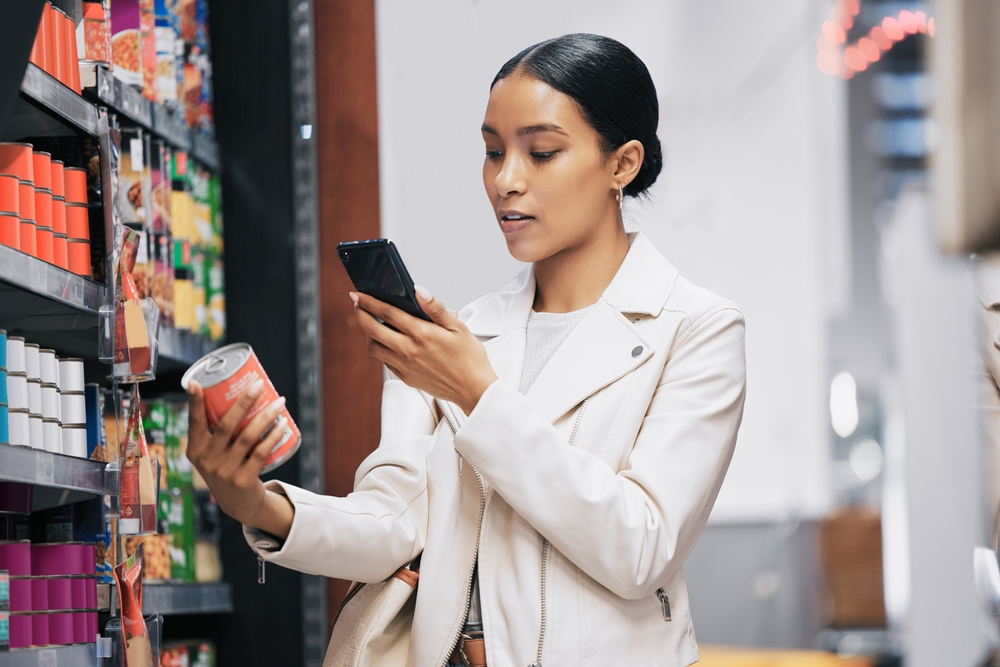
The way we shop for groceries is quickly evolving in a digitally enabled, data-driven world. But which changes are meaningful to consumers? Understanding the customer journey, from preparing for a grocery trip to navigating store aisles and checking out or ordering online, spotlights how technology can optimize the moments that matter to shoppers.
Grocery Trip Planning
For most households, grocery shopping is a weekly ritual and errand. While the need to stock up on food and household essentials may stay the same, the way consumers prepare for their grocery trips is changing thanks to new technologies.
Our research shows that 74% of shoppers prepare for a grocery trip by making a shopping list, whether on paper or digitally, and nearly half (44%) of shoppers estimate the total basket cost beforehand. Looking ahead, we can expect grocery pre-planning to become even more digitized and personalized.
With generative AI, apps could help shoppers plan meals and shop for groceries, providing an opportunity for brands and retail marketers to deepen customer connections. Imagine a GenAI-powered app that suggests specific branded products based on the shopper’s taste preferences, past purchases, household size, new product launches and other insights. This supports a shift towards an exploratory, inspirational experience around grocery pre-planning—driving value for brands and marketers.
Navigating the Store
We’ve all been there—dashing through the grocery store aisles, trying to get our shopping done as quickly as possible. Other shoppers may meander up and down the aisles in case something catches their eye. We surveyed grocery shoppers on how they navigate store aisles and found:
- 30-33% take the quickest route through the store
- 28-32% browse up and down most aisles
- 8-9% go up and down every aisle
Source: 84.51° Customer Knowledge Quarterly
Sample sourced from consumers who shopped at Kroger Q1 2021-Q4 2023
With the majority of shoppers either speeding through stores or selectively browsing, there’s an opportunity for technology to enhance these grocery experiences. For the speed shoppers,
smart carts equipped with responsive displays could map out the most efficient path based on the shopping list while also showcasing promotions and coupons tailored to items placed in the cart.
For the selective browsers, digital shelf displays equipped with QR codes could highlight discounts and promotions as well as ratings and product information. Additionally, augmented reality overlays on shelves that come alive through a camera app can add immersive graphics and other bonus content.
By understanding the different shopper traffic flows through grocery stores, brands and retail marketers can use technology to create more contextual, engaging experiences tailored to each navigation style. The ultimate goal is driving awareness, inspiration and sales at just the right moments throughout the shopper’s physical journey.
Shopping for New Items
When it comes to learning about new items when shopping online for groceries and household items, our research shows that shoppers seek information through the following avenues:
- 39% Search Bar
- 38% “New Items” section of website
- 16% Follow pop-up ads for new items while shopping
- 24% Don’t seek out info on new items
- 10% Are not sure if the items they search are “new”
SOURCE: 84.51° Real Time Insights, February 2024
The base used for this study included consumers who shopped both in-store and online at Kroger over the past 52 weeks.
Some ways that technology can help brands and retail marketers maximize these findings include:
1. Optimize online listings and content
Expect to see more brands leverage AI, machine learning and data management capabilities to strategically optimize titles, descriptions and other content elements to increase search visibility and provide more relevant results, connecting brands with high-intent shoppers in real time.
Also, the finding that 10% of surveyed shoppers are unsure if the items they search for are new highlights the importance of providing clear and accurate descriptions that make it easier to identify new offerings.
2. Harness the potential of the “new items” section
With 38% of surveyed shoppers utilizing the “new items” section of websites, brands and retail marketers should regularly update and promote new products in this dedicated section. By showcasing new items prominently, businesses can capture the attention of shoppers who are specifically looking for fresh and exciting options.
3. Seize opportunities with pop-up ads
Our research shows some shoppers (16%) use pop-up ads to discover new items while shopping. By ensuring that these ads are relevant and provide value, businesses can capture the attention of potential customers and drive engagement.
The Future is Now
With the rapid evolution of technology, there are numerous opportunities to enhance the grocery shopping experience and tailor it to accommodate different shopper preferences. Gen AI-powered apps can personalize grocery lists and meal plans, while smart carts and digital shelf displays can help shoppers better navigate the aisles and shelves. By utilizing key customer insights, brands and retailers can ensure grocery shopping is more personalized and convenient than ever, in a way that matters to shoppers.
Ritesh Khire is VP, Head of 84.51° Labs, a retail data science, insights and media company owned by The Kroger Co.



